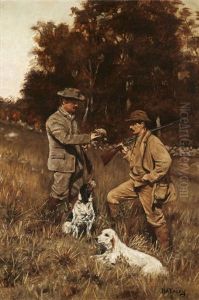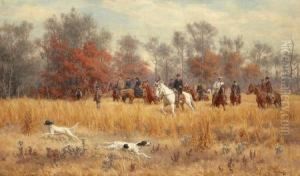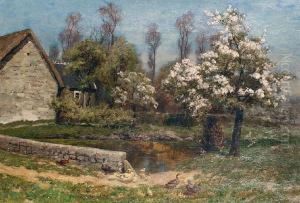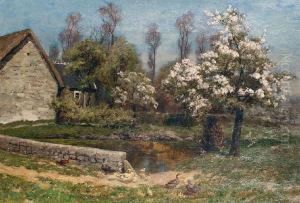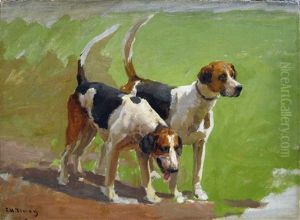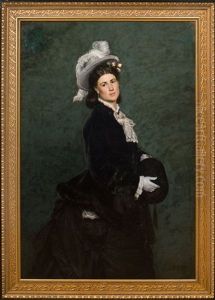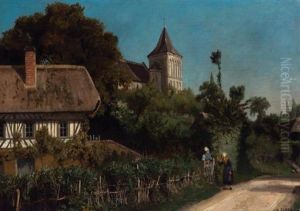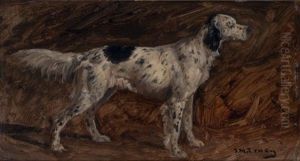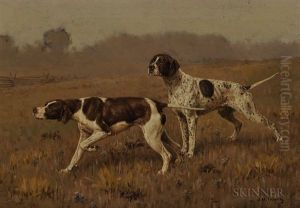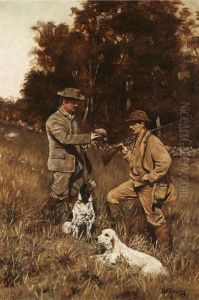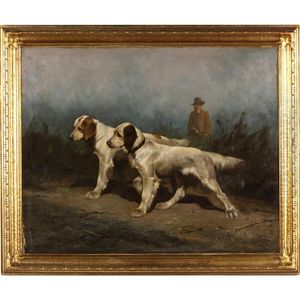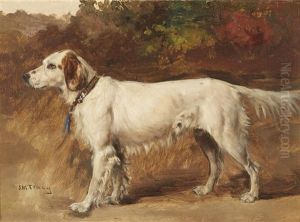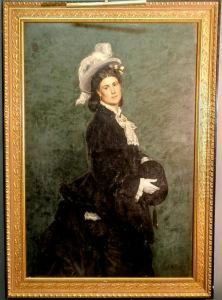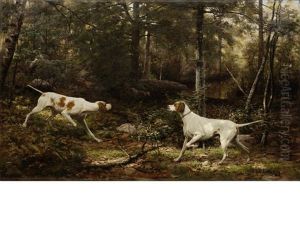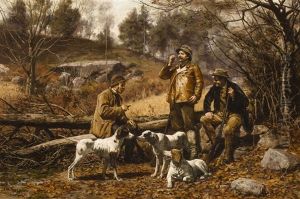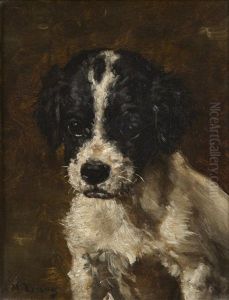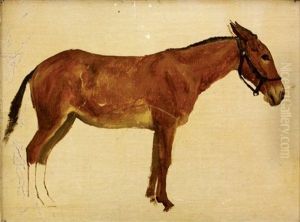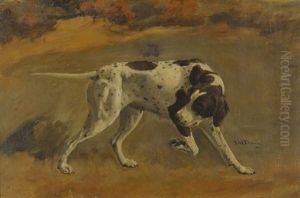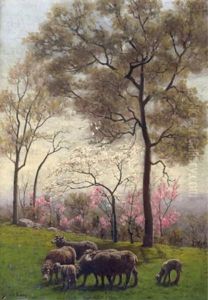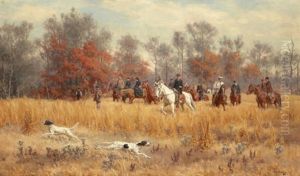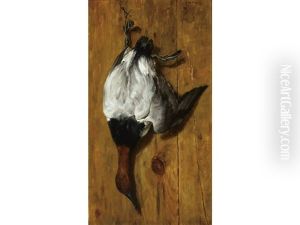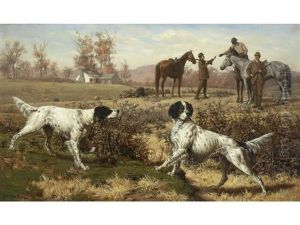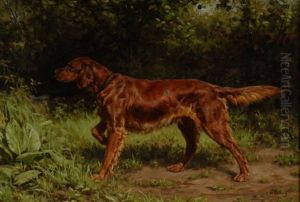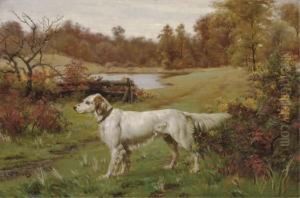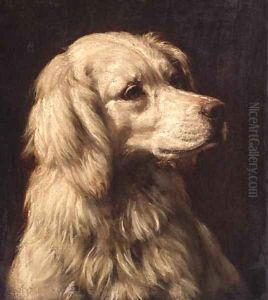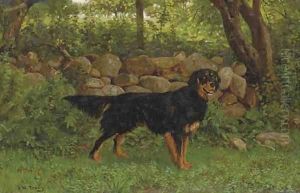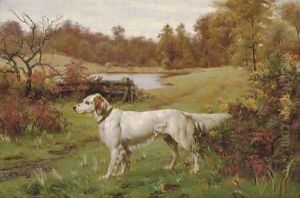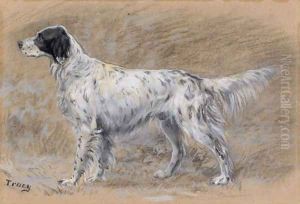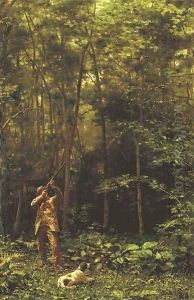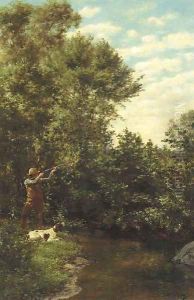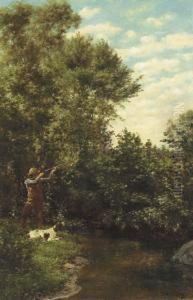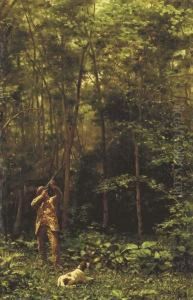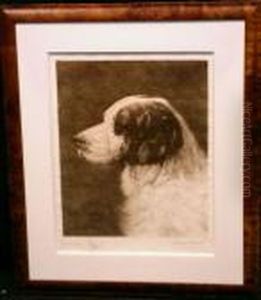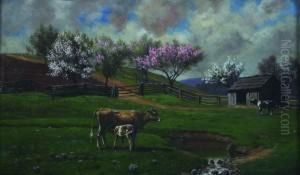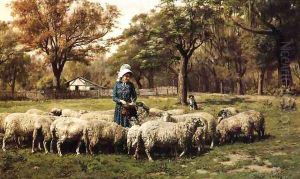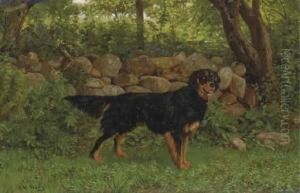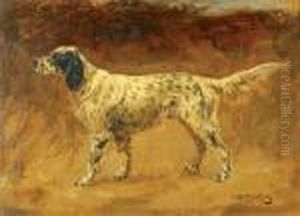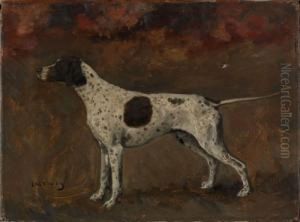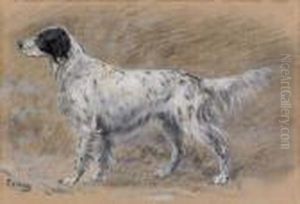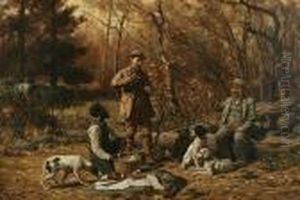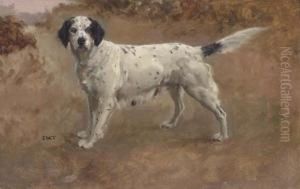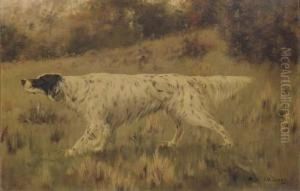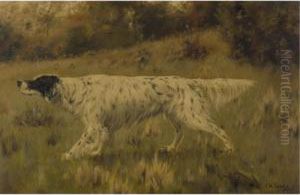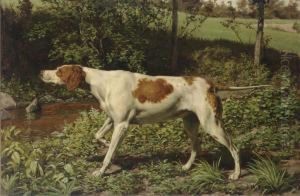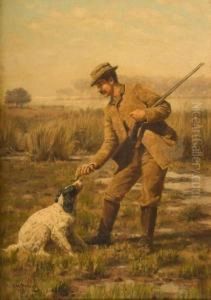John Martin Tracy Paintings
John Martin Tracy was an American artist known for his paintings of dogs and sporting scenes. He was born on November 26, 1843, in Franklin County, Ohio. Tracy's love for art was evident from an early age, but his path to becoming a celebrated painter was not straightforward. He initially pursued a career in law and even enlisted in the Union Army during the American Civil War, where he served with distinction.
After the war, Tracy’s passion for art took precedence, and he traveled to Europe to study painting. He spent time in Paris, where he was influenced by the Barbizon School, a group of painters who focused on realism and nature. This experience honed his skills and deepened his appreciation for naturalistic settings, which would later become a hallmark of his work.
Upon returning to the United States, Tracy settled in St. Louis, Missouri. It was here that he began to focus on painting animals, particularly dogs, and the outdoor life. His works often featured hunting scenes, and he became known for his ability to capture the essence of the dogs he painted. Tracy's paintings were characterized by their attention to detail, use of light, and the emotional connection between the animals and their environment.
Tracy exhibited his work in various art shows and gained recognition for his unique subject matter. His paintings resonated with sportsmen and dog enthusiasts, earning him commissions and helping to establish his reputation. Tracy's art was not only appreciated for its aesthetic qualities but also for its accurate depiction of different dog breeds and hunting scenes, which held great appeal to patrons from the sporting community.
John Martin Tracy was a member of the National Academy of Design and the American Watercolor Society. Despite his successes, he faced personal and financial difficulties throughout his life. He passed away on February 21, 1893, leaving behind a legacy of work that has continued to be admired by art collectors and enthusiasts of canine art.
Tracy's contributions to American art, especially in the genre of animal and sporting painting, have been celebrated through exhibitions and retrospectives. His work captures the spirit of the post-Civil War era in America and the growing cultural interest in outdoor sports and the natural world. Today, his paintings can be found in various museums and private collections, serving as a testament to his talent and his passion for the subjects he so skillfully depicted.
